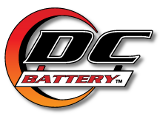|
For Immediate Release: AUGUST 22, 1997LIFELINE BATTERIES EXCEED SAFE BATTERY TESTSLIFELINE BATTERY HAS SUBMITTED ALL OF THEIR MARINE, RV, UPS, TELECOM, MOBILITY (EV) AND Solar Panel VALVE REGULATED SEALED LEAD ACID (VRSLA) BATTERIES TO THE U.S. DEPARTMENT OF THE NAVY FOR TESTING TO MILITARY SPECIFICATION #MIL-B-8565J (HYDROGEN GAS EMISSION). FURTHERMORE, TESTING HAS BEEN PERFORMED BY UNDERWRITERS LABORATORIES ON THE SAME BATTERIES AND FOUND IN COMPLIANCE WITH UL 924 AND UL1989. ALL OF THE LIFELINE VRSLA BATTERIES ARE A UL RECOGNIZED SYSTEM COMPONENT.
HISTORY
The United States Coast Guard issued Boating Safety Circular #78, which detailed charging guidelines when installing Gel Batteries afloat. The findings of the American Boat and Yacht Council and the Coast Guard published in this advisory immediately created concerns for Marine, RV and Solar Panel builders and end users of sealed gel batteries. Lifeline was urgently asked to differentiate their AGM technology batteries from Gel recombinant gas products and substantiate why they were safer. The only choice was to produce proof that Lifeline batteries were the safest deep cycle lead acid batteries manufactured.
THE TESTLifeline did find a very stringent standard pertaining to battery gas emissions written for batteries installed on aircraft. These MIL-SPEC (Military Specification) tests involve fully charging a battery, heating it to over 130 degrees (Potential Thermal Runaway Conditions) and then overcharging the battery (16V for a 12V battery) to simulate a shorted cell. The process is completed in a temperature-altitude chamber. Air samples are removed during the test and injected into a gas chromatograph, which measures the percentage of hydrogen present. Four point one percent (4.1) hydrogen gases is required for flammability in air; and a measure of less than three point five percent (3.5) hydrogen emission is required by the U.S. Government to pass this test. Further, upon completion the battery must still function normally!
THE RESULTSEach Lifeline battery not only passed the gas emission test in MIL-SPEC B-8565J (Section 4.6.22), but no single unit generated over one percent hydrogen gas in any test section. That equates to over 99 percent recombinant gas efficiency even during a simulated-shorted cell overcharge. While these standards subjected the battery to significant abuse, they also represented real situations encountered with defective charging systems. Lifeline acknowledges that no batteries are non-explosive, and that anything, even solid metals can be made to explode under the wrong set of circumstances. Lifeline batteries have proven that they are the safest lead acid Marine, RV, Solar Panel, Inverter and Stand-by UPS batteries available.
ADDITIONAL TESTINGFurthermore, testing performed by Underwriters Laboratories on the same batteries found them in compliance with UL 924 and UL1989. All of the Lifeline batteries are a UL recognized component.
|
